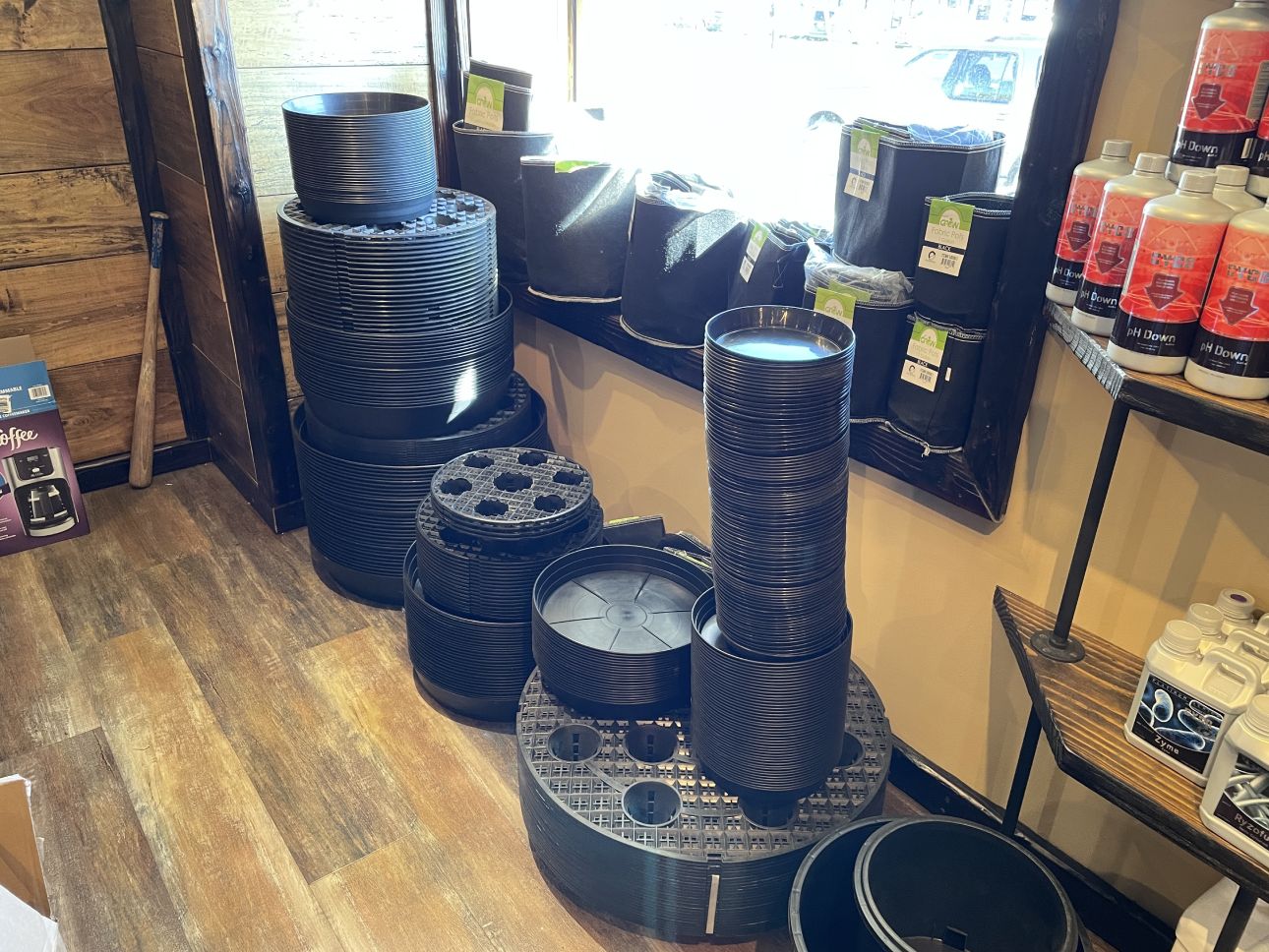Harnessing the Power of Hydroponics: a Deep Dive Into Utilizes and Various Types
In the realm of contemporary farming, hydroponics has actually become an approach that tests conventional farming practices by offering a water-efficient and space-saving option. The application of hydroponic systems opens a globe of opportunities for growing plants in varied settings, eventually affecting food manufacturing and sustainability. As we navigate via the intricate landscape of hydroponics, exploring its different types and applications, a much deeper understanding of its possible to transform farming methods and address worldwide food safety worries begins to unravel.
Benefits of Hydroponic Farming
Undoubtedly, the benefits of hydroponic farming are becoming progressively acknowledged in contemporary farming practices. Hydroponic farming offers various benefits over standard soil-based farming. One of the primary advantages is water performance; hydroponic systems use up to 90% less water contrasted to standard farming techniques. This decrease in water use is crucial in combating water scarcity problems internationally.
Furthermore, hydroponic farming allows for higher control over nutrient degrees, leading to faster plant development and higher returns. By providing essential nutrients directly to the plant roots, hydroponic systems promote healthier and a lot more durable plant development. Additionally, the controlled environment of hydroponic systems lessens the threat of illness and bugs, decreasing the need for hazardous pesticides and herbicides.

Common Kinds Of Hydroponic Solutions
One prevalent type is the Deep Water Society (DWC) system, where plant origins are immersed in a nutrient remedy. The Ebb and Flow system, also known as Flooding and Drain, regularly floods the plant roots with nutrient service prior to draining it. Wick systems, the most basic type of hydroponics, utilize a wick to passively supply vitamins and mineral service to the plant origins.
Nutrient Film Method (NFT) System

One of the essential benefits of the NFT system is its water performance. The Indoor Earthworm. Since the nutrient service is recirculated in a shut system, this approach utilizes substantially much less water compared to typical soil farming. In addition, the NFT system is space-efficient, making it optimal for interior farming or in locations with limited room for standard agriculture
However, the NFT system calls for careful tracking and upkeep to ensure the continuous flow like it of water and nutrients. Any kind of interruption in the circulation can quickly affect plant wellness. In general, the NFT system provides a lasting and efficient method to grow plants hydroponically, specifically for plants that prosper in well-oxygenated origin settings.
Deep Water Culture (DWC) System
Moving from the Nutrient Film Technique (NFT) system, the Deep Water Culture (DWC) system is a hydroponic approach that involves putting on hold plant roots straight in a nutrient service. Unlike NFT, where origins are constantly revealed to a slim movie of nutrient remedy, DWC plants have their origins submerged in a storage tank loaded with oxygenated vitamins and mineral water. The roots hang in the nutrient solution, allowing for straight uptake of water and essential nutrients.
One of the essential benefits of the DWC system is its simpleness and low upkeep requirements. The consistent access to oxygen and nutrients advertises fast growth and greater returns. Nonetheless, DWC systems need sufficient oygenation to avoid origin rot and make sure ideal nutrient absorption. Normal surveillance of pH degrees and nutrient focus is important to avoid discrepancies that might hurt plant health and wellness.
Aeroponic System
An innovative method in hydroponics cultivation, the Aeroponic System makes use of a misting or misting system to supply nutrients directly to plant origins suspended in the air. This system is recognized for its ability to advertise rapid growth and reliable nutrient uptake because of the direct shipment of nutrients to the origins, enabling the plant to focus its power on growth rather than looking for nutrients. In an aeroponic arrangement, plants are generally housed investigate this site in a shut atmosphere where the origins are periodically misted with a nutrient service. This misting cycle makes sure that the origins get ample oxygen, promoting healthy and balanced root development and overall plant development.
One of the key benefits of aeroponics is its water effectiveness, as the system uses dramatically less water compared to traditional soil-based cultivation techniques. Furthermore, the accurate shipment of nutrients directly to the origins can cause greater yields and the original source faster growth rates. While aeroponics can be more intricate to establish and keep compared to other hydroponic systems, its possibility for boosted plant growth and effectiveness makes it a prominent choice for commercial farmers and hydroponic fanatics looking for optimal outcomes.
Conclusion
To conclude, hydroponic farming supplies countless benefits and various kinds of systems to select from. The Nutrient Movie Strategy (NFT) system, Deep Water Society (DWC) system, and Aeroponic system are amongst the most typical methods made use of in hydroponics. Each system has its own advantages and limitations, making it crucial for farmers to meticulously consider their needs and choices prior to picking the most appropriate system for their crops.
Unlike other hydroponic systems where plants are immersed in a nutrient service, in the NFT system, the roots are subjected to the water only in a shallow movie.Relocating from the Nutrient Movie Method (NFT) system, the Deep Water Society (DWC) system is a hydroponic method that includes putting on hold plant roots directly in a nutrient remedy.An ingenious method in hydroponics growing, the Aeroponic System uses a misting or fogging system to provide nutrients straight to plant roots put on hold in the air. The Nutrient Film Strategy (NFT) system, Deep Water Culture (DWC) system, and Aeroponic system are among the most typical techniques made use of in hydroponics. Each system has its own benefits and restrictions, making it crucial for farmers to thoroughly consider their requirements and preferences before choosing the most appropriate system for their plants.